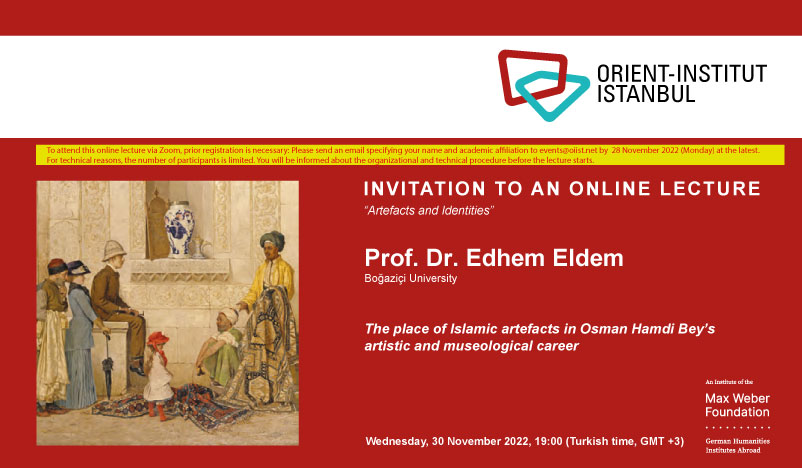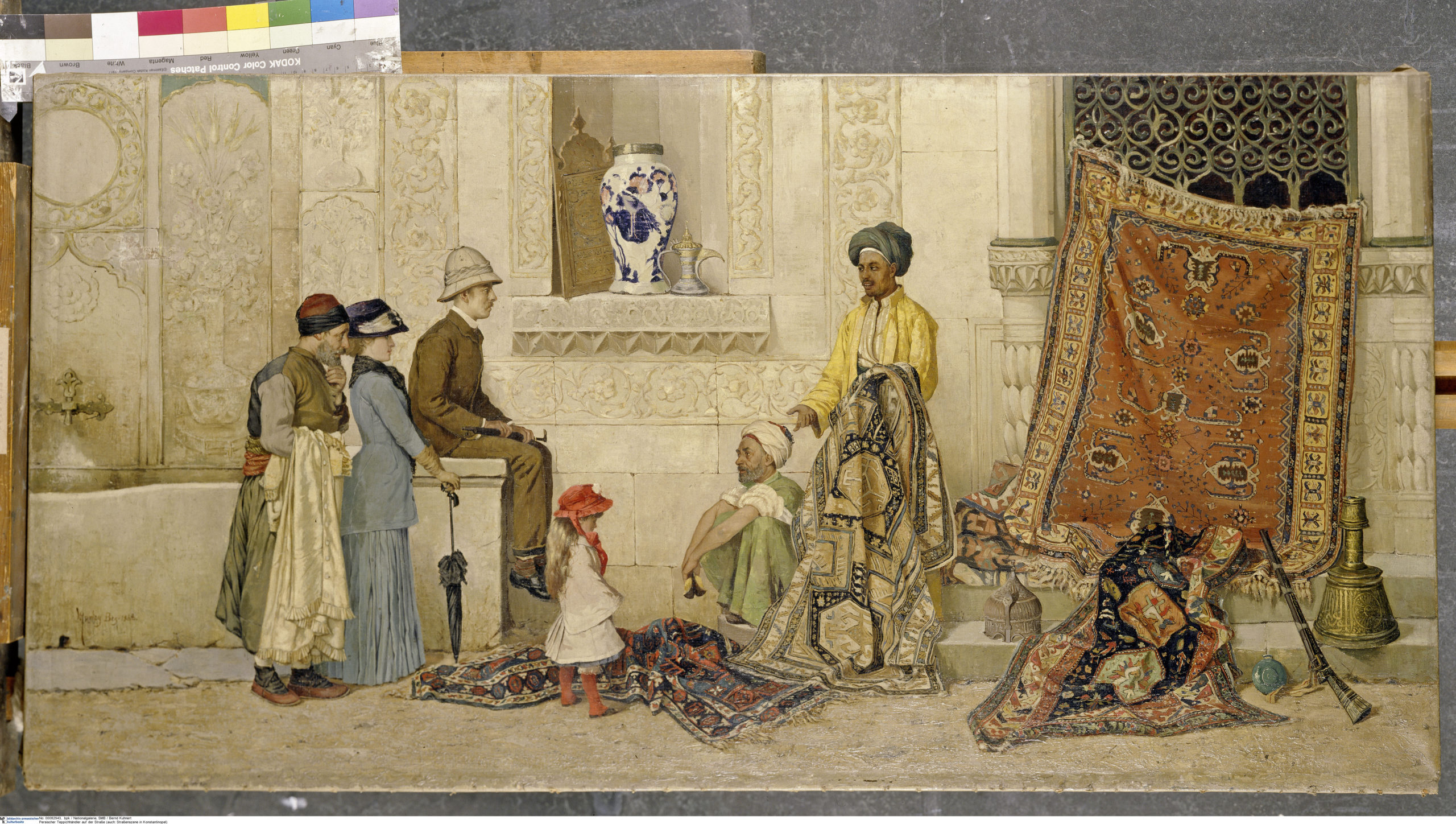November, 2022
Details
IMPORTANT NOTICE: To attend this online lecture via Zoom, prior registration is necessary: Please send an email specifying your
Details
IMPORTANT NOTICE: To attend this online lecture via Zoom, prior registration is necessary: Please send an email specifying your name and academic affiliation to events@oiist.net by 28 November 2022 (Monday) at the latest. For technical reasons, the number of participants is limited. You will be informed about the organizational and technical procedure before the lecture starts.
Prof. Dr. Edhem Eldem
(Boğaziçi University)
The place of Islamic artefacts in Osman Hamdi Bey’s artistic and museological career
Wednesday, 30 November 2022, 19:00 (Turkish time, GMT + 3)
Abstract
Osman Hamdi Bey (1842-1910), celebrated both for his talent as a painter and his achievements at the head of the Imperial Museum, has always had an ambiguous relationship to Islamic monuments, objects, and artefacts. On the one hand, they represented a gradual addition to the collections of the Imperial Museum, which eventually developed into a separate museum of Islamic art. On the other, they formed an integral part of his art, considering that he specialized, especially after the 1880s, in the depiction of Oriental(ist) scenes, consisting of one or a few figures in Eastern garb, located in, or before, a partially visible Ottoman monument, and surrounded by objects and artefacts of generally the same origin. Additionally, he also toyed with the idea of using these objects as a means of reviving local crafts, much in line with the arts and crafts movement initiated by the South Kensington Museum and emulated by practically every European state.
The three dimensions of Hamdi Bey’s engagement with Islamic arts and objects were not mutually exclusive. The use he made of these artefacts in the construction of imaginary scenes in his paintings was a constant until his death, and a close look at his works reveals numerous and significant repetitions and continuities. His treatment of the same objects as part of the museum’s collections was much less consistent. His initial plan of a revival of crafts never really took off, and soon left its place to the setting up of a collection that remained marginal compared to the institution’s focus on more ‘noble’ categories of antiquities. It was only towards the end of his life that this collection received much greater attention, mostly thanks to his brother Halil Edhem’s interest for Islamic heritage, in conformity with the rise of Turco-Islamic nationalism among the political and intellectual elites of the time.
Bio
Edhem ELDEM is a professor at the Department of History of Boğaziçi University and holds the International Chair of Turkish and Ottoman History at the Collège de France. He has taught at Berkeley, Harvard, Columbia, EHESS, EPHE, ENS, and was a fellow at the Wissenschaftskolleg zu Berlin. His fields of interest include the Levant trade, funerary epigraphy, Istanbul, the Ottoman Bank, the history of archaeology and museology in the Ottoman lands, Ottoman first-person narratives, Ottoman photography, Westernization, Orientalism, and Osman Hamdi Bey. Selected publications: French Trade in Istanbul in the Eighteenth Century (1999); A History of the Ottoman Bank (1999); The Ottoman City between East and West: Aleppo, Izmir and Istanbul (1999, with D. Goffman and B. Masters); Pride and Privilege. A History of Ottoman Orders, Medals and Decorations (2004); Consuming the Orient (2007); Scramble for the Past: A Story of Archaeology in the Ottoman Empire (2011, with Zainab Bahrani and Zeynep Çelik); Camera Ottomana. Photography and Modernity in the Ottoman Empire (2015, with Zeynep Çelik); L’Empire ottoman et la Turquie face à l’Occident (2018); L’Alhambra. À la croisée des histoires (Paris: Les Belles Lettres, 2021).
Zeit
(Mittwoch) 19:00


